18 October 2007, Argos Brussels, Co-production with Metaphon
Big crowd for the concerts of CM von Hausswolff, Asmus Tietchens & Thomas Köner and John Duncan. Thank you all for coming!
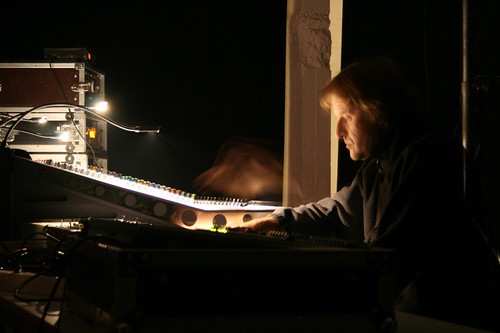
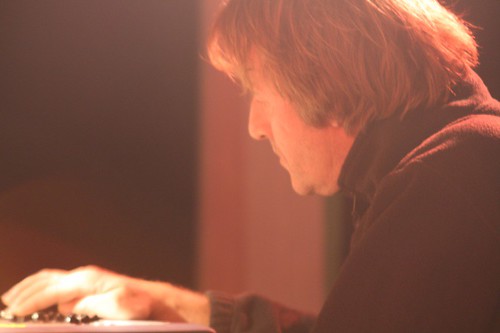
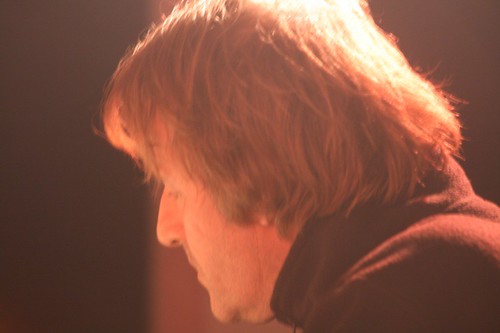
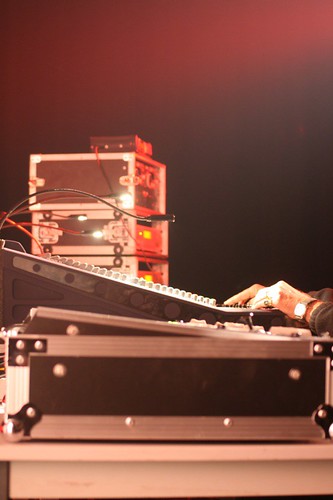
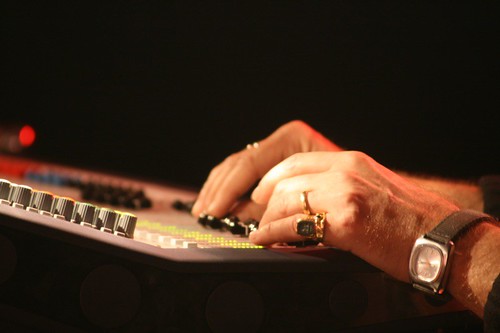
CM von Hausswolff


Asmus Tietchens
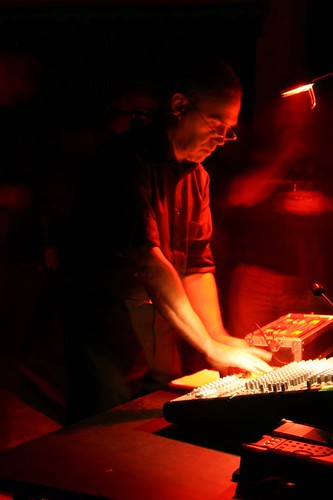
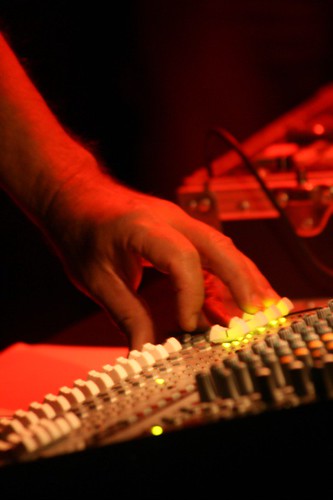
John Duncan
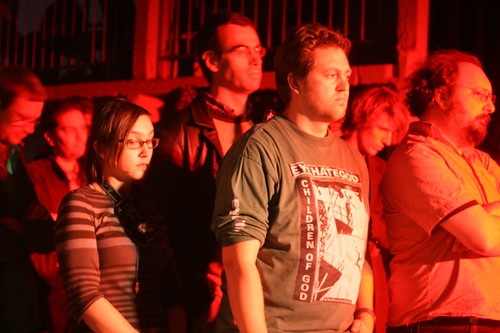
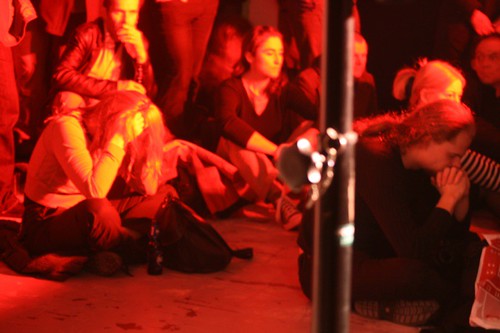
18 October 2007, Argos Brussels, Co-production with Metaphon
Big crowd for the concerts of CM von Hausswolff, Asmus Tietchens & Thomas Köner and John Duncan. Thank you all for coming!





CM von Hausswolff


Asmus Tietchens


John Duncan


17 October 2007, Argos Brussels
David Toop read a piece from his forthcoming book ‘Ways of Hearing’ (It’s a nice coïncidence that our series has the same title) in which he researches, in a very personal way, the position of hearing in the realm of the senses. He talked about some of the things that inspired him: his meeting with a deaf-mute girl (and her disagreement with some of the statements in John Cage’s ‘Silence’), the mistake in John Berger’s influential book ‘Ways of Seeing’ (“Seeing comes before words. The child sees and recognizes before it can speak”), the pressure he was under to include visual elements in his exhibition ‘Sonic Boom’ (which is typical in the contemporary art circus), Marcel Duchamp’s idea (the 1914 Box) that “one can look at seeing; one can’t hear hearing”, and, last but not least, the ‘Eavesdropper’ (‘de luistervink’) series of the 17th century Dutch painter Nicolaes Maes (see below)


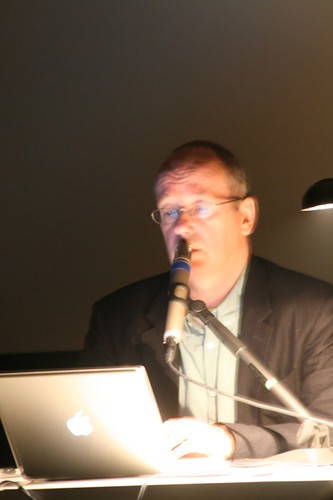
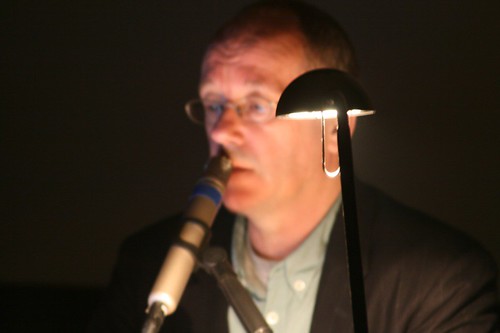
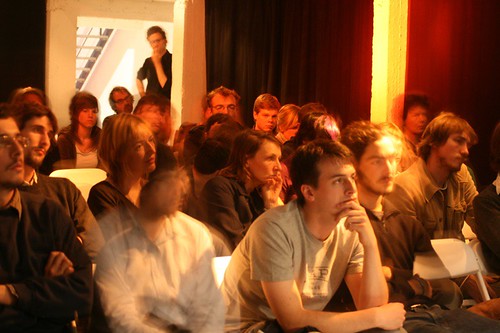
16 October 2007, Argos Brussels. Co-production with PACKED

Chris Vastenhoud (PACKED)
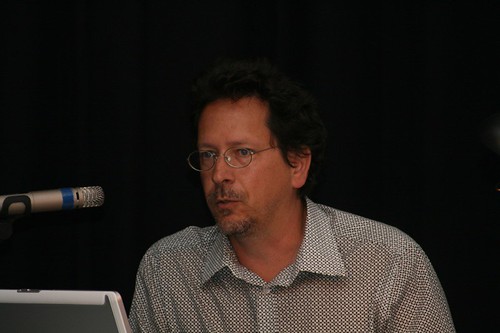
Alain Depocas
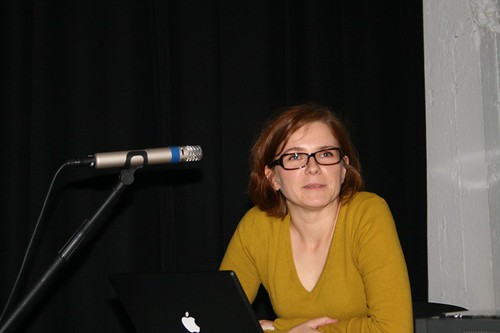
Agathe Jarczyk
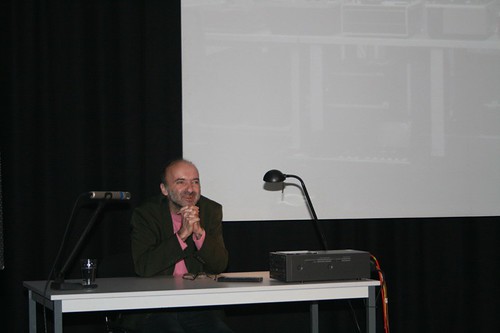
Christoph Blase
Synthese written by Barbara Dierickx
Yesterday the Media Matters seminar was held at argos. This seminar was organised by Packed (Platform Archiving en Conservering van Kunstcreaties op elektronische en digitale draggers) in co-production with argos. The speakers and audience were welcomed by Chris Vastenhoud, coordinator at Packed, who gave a short introduction on the organisation. Packed wishes to develop a suitable solution in Flanders for the preservation of new media art, offering a platform for the exchange of information on the topic. This would lead eventually to the creation of a center of expertise, where research can be held in various domains such as annotation and metadata, storage, distribution, preservation, rights procurement and theory. The working of Packed has an international perspective and is also involved in conservation projects on European level and the Getty-based Art and Architecture Thesaurus.
The next speaker was Alain Depocas, Director for the Centre for Research and Documentation (CR+D) of the Daniel Langlois Foundation and research leader with DOCAM, an international alliance investigating the documentation and preservation of the digital art heritage. DOCAM is considered a ‘follow-up’ of the Variable Media Network, where Depocas was also a coordinator. At Media Matters, he lectured about DOCAM’s completed projects, how they work and what will be happening in the future. DOCAM tries to convince people of the urgency of doing something about new media conservation, by educating a new generation of future researchers. Their approach is multi-focussed and directed towards cataloguing and terminology as well as pedagogical activities. The latter is achieved by the organization of seminars on PhD level, the ‘Techwatch’ tool and active research and publication made by the students themselves. Depocas mentioned other DOCAM-tools like a French/English glossary; consisting of words that frequent the DOCAM publications, and the ‘Technology Resources Directory’; a search engine that displays relevant URL’s in fields like video and mixed media. Participants in the DOCAM project are either university- or museum linked and they have ‘researchers in residence’ for a specific period of time; these people can share their interest and working methods with other DOCAM participants. DOCAM works through various case-studies; their researchers have backgrounds in (amongst others) computer science or art history – a mere theoretical research programme would lead to segregation instead of combined perspectives which can be found in these case studies. Depocas highlighted some case studies that were presented at the ‘Seeing Double’ exhibition. At this event, new media works were presented in their original and restored version so visitors could trie to find a ‘difference’ between them.
Agathe Jarczyck studied the preservation and restoration of modern materials and media at the University of Applied Science in Bern, where she specialized in the preservation and management of video art. Since 2002 she works as a restaurateur for videocompany.ch, a Swiss organization focusing on the archiving, production and post-production of video art. Videocompany does not have its own video art collection but holds regular exhibits. Jarczyck spoke about the ‘Compendium of Image Perturbation in Analogue Video’, a project by AktiveArchive. There are still far more questions relating to preservation of video art than adequate answers, thus questions were posed: “Is this the only copy; where was the collection stored so far; how is this cassette labeled; is it intact or does it have any loose parts, dust, dirt on it; does it have an edge curl …”. As Jarczyck pointed out, everything starts with the playing device. At videocompany, U-Matic tape cleaners and time base correctors are often used instruments. Since not every device of every tape is the same, the technical chain of transfers is left in the hands of specialists. Even monitors are not all the same; a monitor for evaluating a video signal should have an ‘underscan’ mode. Even the wiring in between technical instruments can be of importance while restoring a video tape. Jarczyck also discussed the relation between retouching and ethics. When retouching happens in a bad way, it can destroy the authenticity of the work (cf. the same process in paintings). To avoid this, both the original work (analogue tape) and the new version should be stored in order to ‘undo’ wrong corrections. Videocompany uses a ‘MAZ-Karte’ or recording sheet on which they bescribe every possible aspect of the tape that comes in. To conclude, Agathe Jarczyck discussed the difference in handling between tapes that come out of acces storage versus archival storage. Some key features, such as acclimatization time, should be considered when pulling a tape out of the archive instead of an immediate playback without any further consideration.
The last speaker of the day, Christoph Blase, has led the ‘Laboratory for antiquated video systems’ of the ZKM (Centre for Art & Media) in Karlsruhe since 2004, where scientific and art-historically founded methods are developed to preserve obsolete video formats, restore them and adapt them to new technologies. His presentation gave us an insight (literally) into his ‘Labor’, and he illustrated the way ZKM works with some video footage from their collection. The ZKM holds around 300 videodevices, for playing and/or recording from ’60 – ’80 in its collection. Nearly every tape that comes in can only be played on a particular (historical) device, and in order not to destroy the tape right away, a database system is set up first containing all possible details about the tape itself. After cleansing and running the tape through a TBC, an uncompressed copy is realized. Blase illustrated that one hour of video tape can be equal to 80 GB in data: this poses a storage problem. These films are therefore stored on LTO3 devices, which are kept in one of the three storage facilities at ZKM. The videomaster is also converted into MPEG2 format and stored onto a server; this way it becomes very easy and accessible to watch the tape without damaging it and/or make a preview DVD of it. Some examples of work that has been (re)stored at ZKM was (illegally) captured footage of a Claude Chabrol press conferention, an artist video from ’70 and a partial interview with Marcel Broodthaerts. The last example Blase had brought along was about an early video ‘happening’: in December ’70, people at a gathering saw themselves on a television screen for the first time because they were simultaneously being taped and than played back again from a van. At this time, ZKM is rebuilding this original setting again for an exhibition project, contrasting the ‘old’ experience with ‘new’ people, and showing the original tape next to the new installation.
Video documentation of the ‘Video Vortex: Responses to YouTube’ Conference, 5 october 2007, Argos Brussels. Co-production with Institute of Network Cultures.
Over the past years the moving image has claimed an increasingly prominent place on the Internet. Thanks to a wide range of technologies and web applications it has become possible, not only to record and distribute video, but to edit and remix it on-line as well. With this world of possibilities within reach of a multitude of social actors, the potential of video as a personal means of expression has arrived at a totally new dimension. How is this potential being used? How do artists and activists react to the popularity of YouTube and other ‘usergenerated-content’ websites? What is the impact of the availability of massive on-line images and sound databases on aesthetics and narrativity? How is Cinema, as an art form and experience, influenced by the development of widely spreading Internet practices? What does YouTube tell us about the state of art in visual culture? And how does the participation culture of video-sharing and vlogging reach some degree of autonomy and diversity, escaping the laws of the mass media and the strong grip of media conglomerates?
This Video Vortex conference is the first in a series of international events, aimed at critical research and reflection surrounding the production and distribution of on-line video content, at the instigation of the Institute of Network Cultures (INC).
introduction by Geert Lovink + Lev Manovich
Lev Manovich (RU, 1960) is a Visual Arts Professor at the University of California, where he lectures on media art and theory. His theoretical work, which includes the seminal book The Language of New Media (2003), is considered to be hugely influential in the transitional zone between old and new media, between audiovisual art and digital culture. In his own art practice he focuses, among other things, on the potential of digital cinema, such as in Little Movies (1997), one of the first video projects for the web, and the DVD Soft Cinema (2005), an exploration of the “database-cinema” concept.
Adrian Miles
Adrian Miles (AU, 1960) lectures on the theory and practice of hypermedia and interactive video at RMIT University, Melbourne. His research and applied work surrounding hypermedia, networked interactive video and Deleuzian philosophy in the context of digital poetry hes been published and presented all over the world. His current projects focus on the idea of ‘Softvideo’: video, which does not merely preserve its granular and fragmentary nature in a digital networked environment, but which is also completed with a link architecture, offering new perspectives on narrativity.
Faceted Video
“Video as a form has retained its formal and material ‘wholeness’ as it has migrated to digital and more recently networked environments. This conservativeness at the material level has not hindered the use and appropriation of the network by emerging and potentially novel forms of video practice, but it remains an essentially backwards looking form as it confuses access, distribution and equity with the new.
Softvideo provides a framework for the reconsideration of digital networked video whereby the granularity and fragmentary nature of video and film is preserved after publication. With the addition of a link architecture softvideography becomes crystalline in structure where any moment, or point, in a softvideo work becomes a possible point of connection with any other.
This crystalline structure, when taken literally, provides a productive theoretical and applied framework to conceive of a softvideographic practice. In traditional editing (hard video) an edit is a decision point. In principle this moment is infinitely divisible, and can be connected to any other subsequent sequence, however in hard video once determined this moment and point is single, fixed, absolute and linear.
When conceived of as a crystalline structure a shot or a sequence in a softvideo work now offers multiple facets or faces of connection. Some may be to other sequences in the one work, others might be to other objects, yet others could be to other parts of other videos.
In this manner the crystalline structure of softvideo produces not only a porous multiplicity of pathways, and so in turn a different sort of video object, but it also productively problematises the basic tenets of film and video narrative. In hard video each edit becomes the fixing of a duration as a particular path through the footage. In softvideo as a crystalline structure editing becomes an actualised series of virtual pathways through the footage.
This presentation intends to explore this idea, and to provide an example of such a video work. ”
Tomas Rawlings & Ana Kronschnabl
Plugincinema.com is a platform which supports the creation and on-line distribution of on-line cinema projects. Its instigators are filmmaker Ana Kronschnabl (UK, 1969) and game designer Tomas Rawlings (UK, 1974 ). Together they wrote the book Plug In & Turn On: A Guide to Internet Filmmaking (2004) and are both involved in the media company FluffyLogic. Plugincinema, originally part of Kronschnabl’s doctoral research, has become an international reference in the world of web video.
The pluginmanifesto: presaging the rise of YouTube?
“New films for new machines; how has the definition of a film been challenged by the new platforms and distribution methods made available since the advent of the internet? Since the inception of the Internet we have seen it emerge from a simple, largely technical, text-based exchange medium into a truly multimedia platform. Its pace of change seemingly mixed up with Moore’s Law, doubling and re-doubling as millions of people contribute to the grand media and information project that is the Internet. It is hard to escape the conclusions of the short film by Wesch: “…the machine is using us…”. The mechanics or medium is shaping what we do; have content and medium become so inextricably linked that the delivery mechanisms themselves now delineate our behaviour?
Peter Horvath
Artist Peter Horvath (CA, 1961) has experimented with photo montages for years, and in the domain of web technology he is essentially investigates how to enhance the qualities of his photo work beyond the two-dimensional context. In his current work he develops a web of fragmentary story lines, a framework of multi-coloured mosaics from which a ‘spectator’ can draw his own history by navigating. According to Horvath the web reflects the ongoing process of making choices, through which we appropriate the world around us, and as such it is the ideal medium to investigate the notions of identity, subjectivity and consciousness
“In the world of video and web technology, I have found mediums that encompass and expand the lush, pluralistic and multi-layered qualities of my previous dada-inspired photomontage work. Freed from the restricting two-dimensional context by technological advances, I engage in fragmented narratives and sub-narratives that form and reform as multiple windows open and close. I orchestrate layers of history, including journal entries, sketches, written records, video, photographs, music, voice and general sound loops, resulting in atmospheric investigations into states of being.
I will discuss the Internet as medium for narrative based and abstract video work or “Web Cinema” (using his work as examples); the use of fragmented approaches to narrative structure within the multi-windowed browser environment; his interest in the relational aspects of the medium (one to one x 50,000); and the web’s capacity to facilitate a direct relationship with an individual viewer on his or her own terms.”
Simon Ruschmeyer
Video maker Simon Ruschmeyer (DE, 1980) explores, in theory as well as practice, the borderline areas between classical audiovisual narration and the new possibilities proferred by interactivity and networked communication. Ruschmeyer has realised countless video projects and has recently completed his paper The Moving Web – Forms and Functions of Moving Images on the Internet. His research into new types of artistic production and distribution on the net can be visited on movingweb.org.
ARTISTS MOVING (THROUGH) THE WEB – New forms of artist’s production and distribution on the Internet.
“The Internet is going through two major transitions right now. First, increasing bandwidth accelerates the convergence of the net with moving media like Film, Video & Television. As a result, classical linear structures of narration hit the decentralist logic of hypertext.Simultaneously, the social and communicational mechanism, known as web 2.0, change the routines of production and reception of the medium. At this point many opportunities originate for the ‘connected’ artist – whether it’s new ways of production or distribution.
First Part : The Moving Web – Narration vs. InteractionOriginating from the traditional cultural dichotomy image vs. text I’ll draw a line to two contrary media paradigms of the current World Wide Web: Narration vs. Interaction. The old hypertext-concept and the new temptations of the second generation of web services promise the release of the user from the chains of one-to-many distribution of the old media. But on the other hand, the convergence of old&new brings linear modes of narration back into the new medium. Especially the advertising industry has a strong interest in telling dramatic stories which attract the viewer emotionally and keep him away from leaving their website. A scenario can be drawn with the traditional media supporting linear forms of media structures on the one side and the idea of open networks which empower the users on the other. Is their a conflict on the rise?
Second Part: The Artist 2.0 So what are the phenomena of the moving web which artists focus their attention to? How do they use the Internet to produce and distribute their work? How do they reflect the tension between the commercial and the noncommercial aspects of the medium.
Production: the commercial web industry has discovered the power of ‘user generated content’ and tries to make profit out of it. Artists comment on this trend by acquiring the floods of video content on the web for their on remixes. To illustrate the idea of the artistic remix, I’ll introduce some artworks out of the field of database narration and digital found data.
Distribution: how can artists use the web to self-distribute their art? Just uploading your work on YouTube does not take you any further. Artists with a strong affinity to the web already understand the power of communities and use the net as their 24-hour-stage to promote themselves. ”
Peter Westenberg
Peter Westenberg (NL, 1968) is an artist, film and video maker and a member of the Brussels’ media collective Constant. He examines, among others, the requirements and conditions for collaboration and exchange in the – existing or non-existing – public space of the web. How does image shaping work in a network environment? What are the means, conditional to the creation of a joint image? Are affinity and familiarity reliable codecs? Collective video is investigated as the sum total of exchange processes – an amalgam of social, technical and legal protocols.
Affinity Video
“How do you create an image in a network environment? Which means can be deployed to produce a common image? Are affinity and kinship reliable codecs? Collective video as the sum total of processes of exchange – an amalgam of social, technical and legal protocols. Passing through compatibility, edit decision lists, licenses and agreements, source codes, longings and limitations we travel along the various stage of on-line video production. ”
Keith Sanborn
One of the major principles in the work of media artist and theoretician Keith Sanborn (US, 1952) is the investigation of public images and private perceptions. In his recent work he re-contextualizes web footage, partly as commentary on the current exploitation of user-generated content on such platforms as ‘YouTube’. Sanborn feels this “new” spectacle is less based on a collection of images, than on inter human relations, mediated through images. Resistance requires bringing forward the background to the foreground. “Don’t pay attention to the tiny man behind the curtain” – indeed: pay attention to the curtain.
“Since it has existed, the net has displayed a dialectic of potlatch and recuperation, followed by detournement. Intelligence and generosity are exploited for fantastic profits, but the exploited can be hijacked as well. My work intersects the current phase of exploitation of user-supplied content on Youtube.com, etc., where 15 nano-seconds of fame are exchanged for consigning the aura of individual subjectivity to the ads framing it; in becoming part of a network of interchangeable, equivalent elements, selfhood is sold as commodity. In a necessary irony, my work functions by translating the offerings of Youtube to other contexts, repurposing them as commentary upon that context. Since this violates the principle of “host” ownership, they may not be, nor do I necessarily wish them to return directly to the scene of the crime. In place of one-way broadcast communication, the “new” spectacle offers inter-passivity, pseudo-agency. Creating resistance requires bringing forward the background. “Pay no attention to the little man behind the curtain,” indeed; pay attention to the curtain.”
Johan Grimonprez
In his work, which includes the seminal DIAL H-I-S-T-O-R-Y (1997), Johan Grimonprez (BE, 1962) mainly investigates the use of mass media as a political instrument and the construction of realities in an era of infotainment and media saturation. The overall focus is on the idea of ‘zaptitude’ – the surreal poetry of the ‘channel hopping’, which enables the TV spectator to write his/her own story. In the ambulant video library project Beware! In Playing the Phantom, you become one (1994–1998) Grimonprez also questioned the image of the spectator as a passive consumer. Recently he created Manipulators (2005-2007), along with curator Charlotte Léouzon, a “You-Tube library” variant.
“Manipulators is a TV genre in which the programme is improvised by the curators. With Podcasts,online TV, mobile phones, video Ipods, blogs and YouTube, the digital age allows an infinite number of images and sounds to travel the world in no time. It is the era of home made productions, which expresses the chaotic nature of the human condition today as well as the cynicism of power.This video compilation, which can be understood both as the joyful affirmation of a superb global disengagement and the catalyst of effervescent criticism, is best described as a platform for temporary disobedience.”
14 October 2007, Bozar Brussels. Co-production Argos and Bozar.
Tony Conrad with MV Carbon & guests (Jürgen De Blonde, Dominica Eyckmans, Julia Eckhardt, Stefaan Quix, Stefaan Smaaghe, Timo van Luijk, Els van Riel)/ “Forty-five Years on the Infinite Plain” (1972-2007) / live at the Bozar-Palais des Beaux-Arts, Brussels – Argos Open Archive festival / Oct 13, 2007